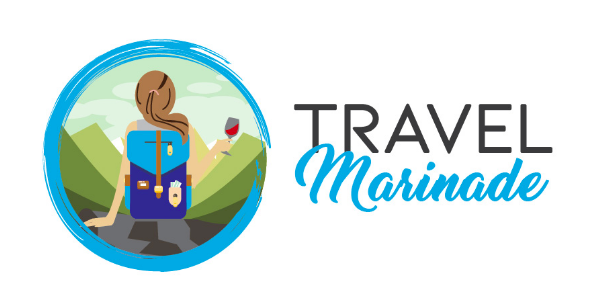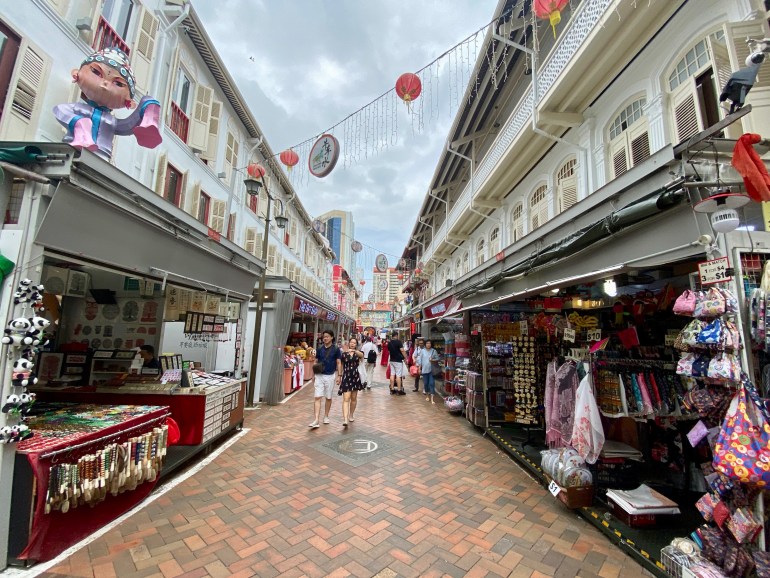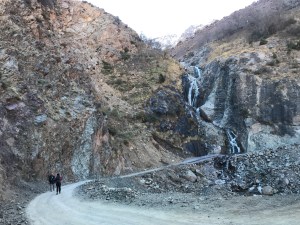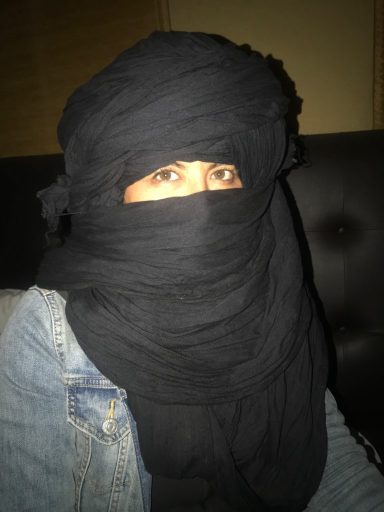Canggu is my preferred place to stay if I find myself staying in Bali for an extended period of time. It’s convenient, trendy, a little hipster, and the surf is a lot of fun in this area. After spending two weeks here, I decided to put together a women’s guide so that you can narrow down your options on places to stay, where to eat, shop, do yoga, and, my favorite, find wine.
ACCOMMODATION

Kos One Hostel / Canggu Village
This is the area’s most Instagrammed place right now. It’s two properties combined into one area that markets to digital nomads and for those looking to party. They have a long list of daily classes beginning with yoga and Crossfit to get your morning started and then more social events in the afternoon to early evening.

The restaurant on site is awesome providing healthy Western options like açaí bowls, pressed juice, strong coffee, fresh smoothies, and poke. They also have unhealthier local options like nasi goreng and mie goreng.
I stayed here for 4 days in a hostel for about $22 USD per night. The rooms itself were all modernized with outlets near the bed, safety security boxes and privacy curtains.
If you want to get a ton of great pictures for your Instagram feed in a prime location, this is the spot to do it. Swings, waterslide, high deck to do flips in the pool for adrenaline junkies, and a swim-up bar. Check out Alternative Beach which is the pool onsite. They accept cash and credit card making it ultra-convenient.
Ayok Surf & Stay

If you aren’t a party person and prefer something a bit mellower, I’d recommend staying at Ayok Surf & Stay. I found out about this place from another blog I read up on and found it to be a great recommendation. I mostly liked it’s modern, stylish, surf decor – including an enlarged reprint of Ayok as a child with a surfboard. I get my own room for about the same price as Kos One shared hostel, the showers are nice with complimentary towels, shampoo, and body wash, and the beds are comfortable providing more than just a sheet. The wifi also works well enough to stream if you need to do any work online or want to take a down day to watch a movie.
The only con to staying here is that there is no pool or activities included and it’s cash only. This is really meant for independent travelers who prefer doing their own thing or introverts who don’t like a lot of different energy floating around.
The road it’s located runs parallel to Kos One Hostel / Canggu Village (Echo Corner) but I find it to be quieter and perhaps a little more high-class. There are nicer boutiques and cafes on this side and it’s still in a prime location walking distance close to the beach. My preference would be to stay here instead of right next to the beach. There’s a bit more of a scene in this area and the beach is a short 10-minute walk away.
I ended up staying at Ayok Surf & Stay for one week in two trips combined. If you stay here for a week, they’ll likely provide you with a weekly discount. They also offer private transport services to the airport for 250K rupiah ($20 USD).
EATING
There is no shortage of great restaurants in this area that’ll meet pretty much any demand you desire. Local food, Italian, Indian, vegan/vegetarian, and sushi lovers. You may need to account for an extra 15-20% on all meals because they add a 10% tax, 5-6% service charge, and 3% fee for using credit cards. But, hey, it’s super convenient and it holds up to our western standards.
LOCAL GRUB
Bar K

This is one of those under the radar places. Another traveler introduced me to this place for its value and quality of food and she did not disappoint! They offer fresh-squeezed juices like dragonfruit for only $1 USD (15K rupiah), nasi goreng for about $1.50 (20-25K), Bintang bucket specials, and a selection of western food if you’re in a group and want more options. The portions are healthy, service is pretty fast, they accept credit cards, and they don’t charge a tax or service fee. If you get a sweet tooth, there’s an awesome ice cream stand next to the restaurant with progressive flavored ice creams like charcoal.
Varuna

This place was listed on GoogleMaps as one of the best warungs in Canggu and I can see why. They have an excellent nasi campur (where you pick what you want from a wide variety of pre-made food) made with the freshest ingredients. This place never felt overcrowded but there were always a few people in there even in the slow season. They’re known for the nasi campur, but I ate the nasi goreng on both occasions. I highly recommend either because both are sought after.
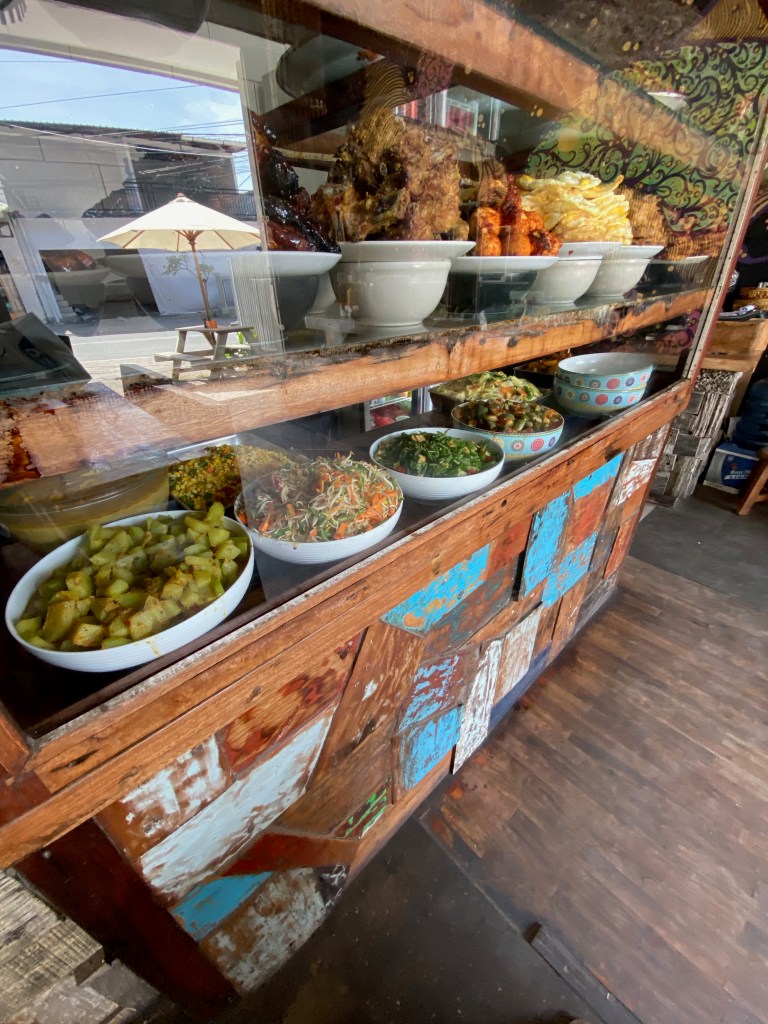
FANCY EATS
If your style is more gourmand or you’re looking for something more vibey, then check out these spots.
La Brisa

This is probably the most popular venue in Canggu and for good reason. AMBIANCE! It’s one of those specially curated places you have to go at least once, especially at sunset. The venue is quite large with different rooms and seating areas. Fancy a treehouse table? Or, perhaps, sitting closer beachside is your thing. This place has something for everyone and is great for solo travelers or groups.

I’ve gone without a reservation on a couple of occasions without a problem and made a reservation for another. They have tables you can sit with prime locations and comfortable pillows really meant for lounging for a $70 minimum (1 million rupiahs) which is easy to do, or you can still sit in sunset view at one of the stools for free. I love that they offer a little creativity to their dishes and that the quality of taste matches the price. They also offer a pretty good shisha here. This is my favorite lounge spot!
The Lawn

This place makes the list for its awesome beach location and loungey atmosphere. There’s a pool you can keep cool if you aren’t feeling those salty-sandy vibes and they have lounge booths for groups you can reserve for a minimum. I personally prefer coming here at night instead of the day because it’s just too hot without AC. They offer a decent wine list, tasty sangria sold by the carafe, 2-for-1 happy hour on crafted cocktails which is an amazing deal. The food is average. This is more of a place to go if you’re looking for drinks and ambiance.
Mason

I must have walked past this place a million times and every time at night it was always bustling. This restaurant also finally kept popping up on my GoogleMaps as highly rated. Finally, on my last night in Canggu, I decided to give it a whirl after the Italian restaurant I loved was full. I’m so glad I did!
First, the wine list. Once I saw their extensive menu ranging from local wine to French Chateauneuf du Pape, I was sold on staying. I plopped myself down on a bar stool with a great view of the bartenders mixing craft cocktails and seeing the works behind the open kitchen. I really enjoyed the lively atmosphere with a select range of edging hip hop music to a more indie poppy vibe.
Now for the food. Their menu is very food-forward ranging from artisan hummus dips to cured meat platters, but they’re really known for their charcoal chicken. Because I haven’t been eating much meat on this trip (only fish) I decided to give it a pass and try the smoked tuna hummus with bread. Initially, when I ordered it I thought I was actually getting the tuna meat and was going to bypass the bread. Instead, it came out has a hummus with fresh pita bread. But, oh my god, so bomb. I absolutely loved it! If I love something as simple as that – then I know their other dishes have to be great.
I didn’t eat much more than that because I was drinking my calories and instead was people watching what everyone else ordered. This is a nice place to come visit if you’re looking for a lively atmosphere and happy, smiling staff.
SURF

Batu Balong Beach
There are other beaches in Canggu to surf, but this one is the most convenient and easiest. It’s near the accommodations and boutiques I listed above, there are plenty of surfboard rentals in the area, and lots of beachside restaurants to hydrate with fresh young coconut water.
I recommend going to Canggu Surf (I might be off on the name). They’re not on GoogleMaps but if you go down the main road (same as Kos Hostel) you’ll see Old Man’s (iconic party bar) on the left and a few restaurants on the right. Go right of the restaurants until you see a little surfboard shop/set up on the beach. I really love these guys because they finally encouraged me to get off a foam board and start using a real board. I had the most epic time and two of my best waves ever after that! Their point entry isn’t at the most popular break (straight ahead in the photo above) but in-between the popular break and a quieter one with fewer people but fewer waves. They also offer free freshwater showers and toilets for paying customers which is super nice after the beach and a place to store your belongings. I never ran into any problems. Ask for Coco!
Be prepared for lots of beginner surfers and everyone going for it at Batu Balong because of its prime location, encouraging big swell, and gentle break. There is no line or wait for your turn. Everyone will go for the same waves, but that’s okay! Everyone wants to ride and sometimes you’ll literally find yourself touching boards with another surfer while dodging others with as many as 5 people at a time. It’s all a part of the charm, I suppose. It feels super communal and no local attitudes who are quite nice! There are plenty of good waves so don’t feel like someone snaked you. It’s all good in the hood around these parts.
YOGA

While a lot of accommodations that offer yoga, including some inclusively, if you’re looking for the best I’d recommend checking out The Practice. At places like Kos One, the loud music or festivities in the background can be very distracting.
I traveled with my own yoga travel mat so I did most of my yoga from my own room. Booking a room with A/C is super nice at places like Ayok Surf & Stay.
SHOPPING

I dropped some serious dough on all the boutiques in Canggu and literally walked in every single shop within a mile radius. You get high-quality, light, and fashion-forward designs. There are very few places in the world I like to shop and this is marked on my world top five and #1 neighborhood to shop for clothes in all of Indonesia. There’s a lot of Australian-designer influence here so you’re not getting the cheesy, tacky, souvenir type shops. Instead, it’s affordable (under $100 for an outfit) sometimes handmade pieces. It’s also beach-chic Boho-ish, but not from your grandmother’s Boho closet.
Shopping can be a very personal experience but if you book at Ayok Surf & Stay or Google Gypsy Restaurant, the best ones are literally on that corner (Echo Corner).

If you want stylishly cropped tees, try Bali Tees on the street that runs parallel at a store called PressBan. Bali Tees donates a small portion of each sale to humanitarian and environmental projects in Bali. You can get cool “bagus” accessories here too.

The jewelry in Canggu is also very stylish. You’ll find lots of affordable gold-plated jewelry to mala-styled beads. The good necklaces like this one will cost you about $80 USD (1.2 million rupiah).

My favorite places to find jewelry is Fineline, a jewelry boutique, and MA:HI jewelry found at 21 Degrees boutique.

The only jewelry markets I’d avoid are the vendors you bargain for. One girl while I was shopping for rings said she bought her ring a week prior and it already started turning green when they guarantee their jewelry is gold plated brass. I bought a sterling silver ring for about $7 USD that broke less than two weeks after I left. That’s why I always prefer buying from a reliable boutique instead of junk shops.
SPAS

Spring Salon
I did try a handful of massage places and spas in the area, but I found Spring Salon to be the best one to treat yourself at. All of these women are highly qualified. I received a shellac/gel manicure and pedicure, facial, stretch therapy massages, deep tissue massages, waxes, and other eye treatments.
You can’t be the prices when compared to western standards. If you get a stretch therapy massage, ask for Sudari. She’s the best! Also, it’s highly recommended you make a reservation. I once had to come in at three different times for different treatments because they book up quickly.
WINE

I was surprised to find a reasonable variety of wine in Canggu including Balinese wine. From what I gather (correct me if I’m wrong) is that they get their grapes from Australia and make it in Bali. I haven’t been able to dig too deep into the wine culture, but with westerners coming here there’s been an increasing demand. Some common local labels found in restaurants and liquor stores are Plaga and Cape Discovery. You can find a bottle in a liquor store for around 200K rupiah and, of course, served at a higher markup in restaurants. The wine itself isn’t bad! Just as good as any under $20 bottle of wine from a grocery store in the states. I preferred the Cape Discovery Syrah the most though.
LAUNDRY
WJ Laundry

Knowing who you can trust to do your laundry here can be less than convincing with expensive garments, but I did find a laundry service that was able to return my brand new whites without any stains, pressed, and folded. Out of the 3 times I used them, only once did my clothes come back after 3 pm the next day. All other times were ready before noon.
I hope this guide helps break down some of the overwhelm for you. Please let me know in the comments below if you’d like me to add any recommendations for other places to shop or dine. I spent all my time in Canggu avoiding tours and other trips, so I really felt like I got a bit more of a local perspective of the area.
